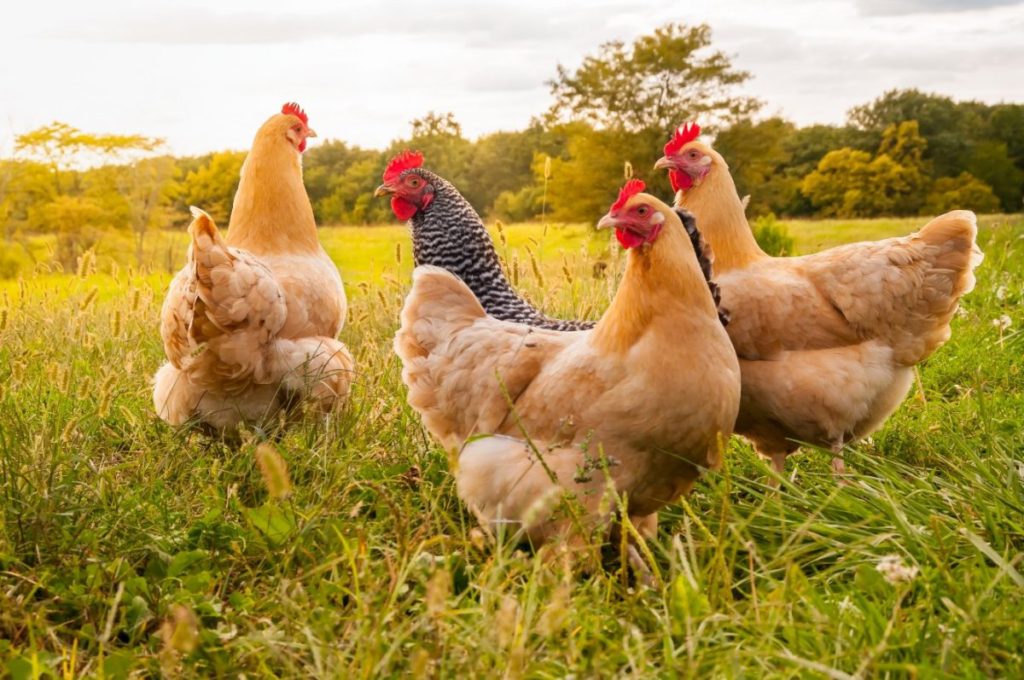Table of Contents
SCIENCE WITH CHICKENS
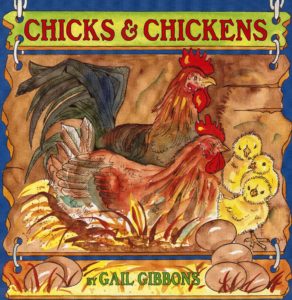
|
Gail Gibbons’s Chicks and Chickens (Holiday House, 2005) is an attractively illustrated picture-book introduction to chicken biology and behavior, variously covering egg-laying, embryo development and hatching, the characteristics of chicks, hens, and roosters, and a survey of chicken breeds. For ages 5-8. |
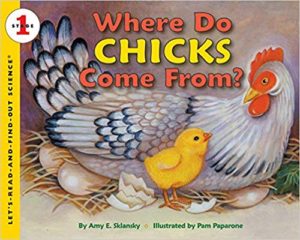
|
Amy Sklansky’s Where Do Chicks Come From? (HarperCollins, 2005) in the extensive Let’s-Read-and-Find-Out Science series covers the anatomy of the egg and (day by day) the three-week-long development of a chick. For ages 4-8. |
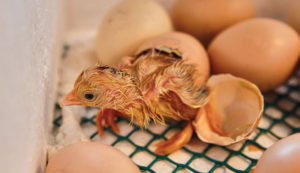 |
Birth! Watch baby chicks hatching here! |
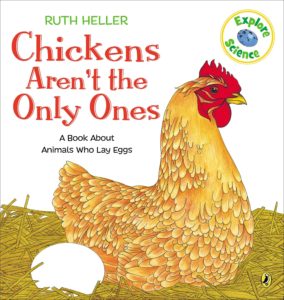 |
Ruth Heller’s Chickens Aren’t the Only Ones (Puffin, 1999) is a gorgeously illustrated picture-book celebration of egg-layers, with an appealing and informational rhyming text. It begins, of course, with the chicken. For ages 3-8. |
| Activities at Chickens Aren’t the Only Ones include making biscuit “eggs,” oviparous headbands, and egg booklets. | |
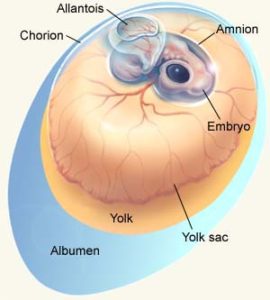 |
Chickscope has a detailed account of the 21-day chick developmental process. Included for each day are diagrams, photographs, explanations, and related math and science projects. |
| Incubation and Embryology from the University of Illinois Extension has an excellent collection of detailed resources on chickens, chick embryology, and eggs. Included are instructions for building a simple cardboard-box incubator and a coffee-can egg candler. | |
| Also from the University of Illinois Extension, activities for younger students include a series of downloadable worksheets in which kids can label and identify the parts of an egg and a chicken, determine which egg is fertile, size and grade eggs, measure incubation temperatures, and more. | |
| Sources for incubators, eggs, and chick supplies include My Pet Chicken, Stromberg’s Chicks and Game Birds, and the Carolina Biological Supply Company. | |
| Learn all about bones, cartilage, ligaments, and muscles by dissecting a chicken leg. For explanations and instructions, see Dissecting a Chicken Leg, a biology lesson targeted at grades 3-6. | |
| Make a dinosaur – from a chicken? Read about reverse-engineering a dinosaur from a chicken at Dino-Chicken or Building a Dinosaur from a Chicken. |
|
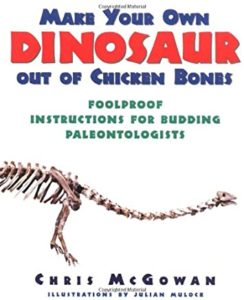
|
Paleontologist Chris McGowan’s Make Your Own Dinosaur Out of Chicken Bones (HarperPerennial, 1997) has a lot of interesting dinosaur information and complete instructions for making your own chicken-bone Apatosaurus. You’ll need three chickens, boiled. A great family project. For ages 9 and up, with help. |
| Which came first: the chicken or the egg? Answer: the chicken. Really. Read about it at Computer Cracks Eggshell Problem. | |
 |
Find out what astrobiology-loving high-school students can do with a rubber chicken at Space Chicken. |
MATH WITH CHICKENS
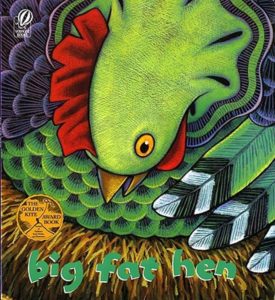 |
Keith Baker’s Big Fat Hen (Sandpiper, 1999) is a vibrantly illustrated picture book of the traditional counting rhyme “One, Two, Buckle My Shoe” with a great gaudy-colored big fat hen. For ages 2-5. |
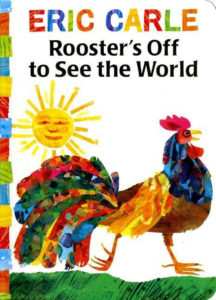
|
In Eric Carle’s Rooster’s Off to See the World (Aladdin, 1999), a gorgeous paper-collage rooster sets out to travel, picking up along the way two cats, three frogs, four turtles, and five fish. Soon, however, it turns out that Rooster hasn’t adequately planned for the trip – there’s no food and everyone is getting cold – so soon his companions, one by one, desert, and even Rooster himself eventually turns around and heads for home. It’s a running-away story for everybody who never got farther than the end of the driveway. For ages 3-6. |
| From Scholastic, Rooster’s Off to See the World Lesson Plan is a hands-on rooster-based exercise in addition and subtraction. | |
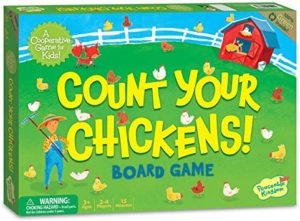
|
Count Your Chickens (Peaceable Kingdom) is an award-winning cooperative board game for ages 3-6 in which players count spaces to collect baby chicks and return them to their coop. Comes with 40 chicks and one mother hen. |
| Chicken Math Ideas has printable activities for early-elementary-level students, including dot-to-dot puzzles, counting sheets, patterning problems, color-by-number pages, and addition exercises. | |
| Solve the famous Chicken Crossing logic puzzle! | |
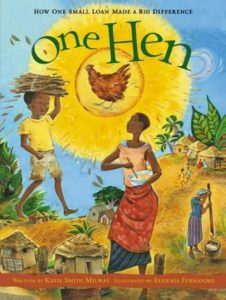
|
Katie Smith Milway’s One Hen (Kids Can Press, 2008), set in Ghana, is a picture-book explanation of micro-loan banking and its impact on people in developing countries. After Kojo’s father dies, he and his mother receive a tiny amount of money – a micro-loan – from their village to buy something to improve their lives. Hopefully their decision will enable them to pay back the loan, which will then be passed on to another needy villager. Kojo buys a hen – and from that hen gradually builds a thriving poultry business. His success impacts all around him. A wonderful story of mutual support and hope for ages 7-11. |
THE ONCE AND FUTURE CHICKEN
| From Smithsonian magazine, How the Chicken Conquered the World is an interesting account of the history (and science) of the chicken from its origin in Asia to modern times. | |
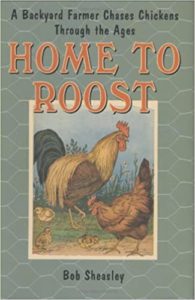 |
Bob Sheasley’s Home to Roost (Thomas Dunne Books, 2008), subtitled “A Backyard Farmer Chases Chickens Through the Ages,” is a chatty and charming account of the life and times of the chicken, encompassing everything from Chaucer’s Chanticleer to pecking order and the chicken genome. For teens and adults. |
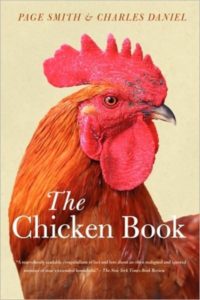
|
By Page Smith and Charles Daniel, The Chicken Book (University of Georgia Press, 2000) is a history of the chicken from its origins in the Asian jungle to the modern industrial chicken. Included are fascinating chapters on chicken folklore, chicken sayings, cockfighting, chicken breeding, and the culinary chicken. Chicken broth, readers learn, was used as a beauty aid in ancient Egypt. For teens and adults. |
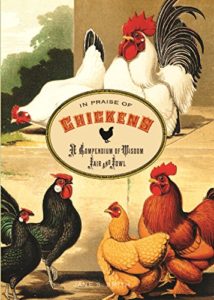
|
Jane Smith’s In Praise of Chickens (Lyons Press, 2011) is a nicely designed compendium of all things chicken, with short chapters titled “A Brief History of Chickens: Domesticating Tyrannosaurus Rex,” “Count Your Chickens: The Numerology of Flock and Nest,” and “Dumb Clucks and Birdbrains: Can a Chicken Beat You at Checkers?” For teens and adults. |
 |
A one-hour PBS documentary, The Natural History of the Chicken (2000), through interviews, reenactments, and anecdotes, tells the fascinating (and sometimes downright peculiar) story of the chicken in American life. Available on DVD or through Netflix or Amazon Instant Video. |
